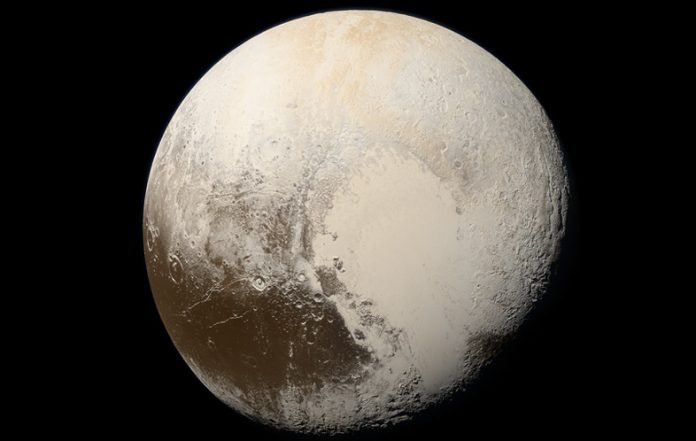
In a new study, scientists found evidence that an insulating layer of gas hydrates could keep a subsurface ocean from freezing beneath Pluto’s icy exterior.
They found the evidence with computer simulations. The finding means there are more oceans in the universe than scientists previously thought.
The study was done by a team of Japanese and American scientists.
In previous studies, NASA’s New Horizons spacecraft has flown through Pluto’s system and provided close-up images of Pluto and its moons.
The photos showed that Pluto has a topography, including a white-colored ellipsoidal basin named Sputnik Planitia, which is located near the equator.
Based on the finding, researchers believe that a subsurface ocean exists beneath the ice shell is thinned at Sputnik Planitia.
But these observations are against the age of the dwarf planet.
In the current study, the team examined what could keep the subsurface ocean warm while keeping the ice shell’s inner surface frozen and uneven on Pluto.
They ran computer simulations covering a timescale of 4.6 billion years when the solar system began to form.
The result showed that the thermal and structural evolution of Pluto’s interior and the time required for a subsurface ocean to freeze and for the icy shell covering it to become uniformly thick.
The finding suggests that a long-lived liquid ocean may exist beneath the icy crust of Sputnik Planitia.
The researchers suggest that there could an “insulating layer” of gas hydrates exists beneath the icy surface of Sputnik Planitia.
Gas hydrates are crystalline ice-like solids formed of gas trapped within molecular water cages.
They are highly viscous, have low thermal conductivity, and could, therefore, provide insulating properties.
The team suggests that there may be more oceans in the universe than previously thought, which means the existence of extraterrestrial life is more plausible.
The leader of the study is Shunichi Kamata of Hokkaido University.
The study is published in the journal Nature Geoscience.



